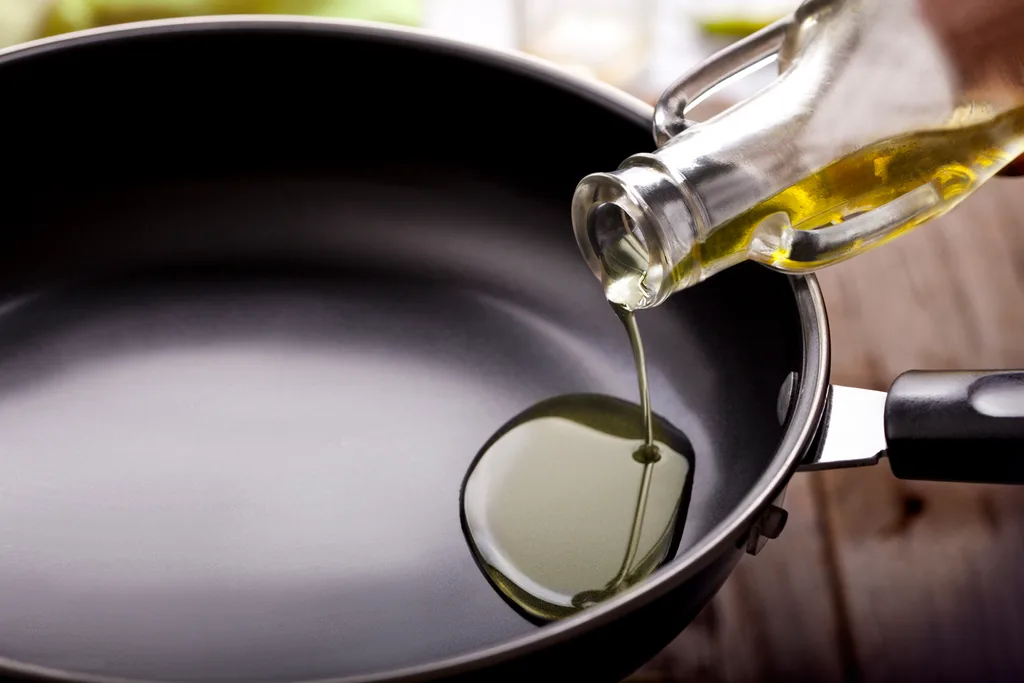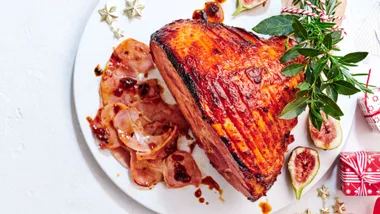Which oil is the best for deep frying? As a quick scan of the supermarket shelves will attest, there are many different varieties of oils out there, each with their own individual flavour profiles, health benefits and uses. While some are perfect for cooking at high temperatures, others are best saved for salad dressings or dishes that are served cold. This is because certain oils have a moderate smoke point and release carcinogenic compounds when heated. Here, we discuss the differences between frying vs deep frying, as well as the best oil to use for each.
What is deep-frying?
Unlike regular or shallow frying, which means cooking food in oil with a depth that reaches about half of its thickness, deep frying involves fully submerging food into oil or fat at a high temperature. This method is mostly used to cook fish, meat, chips and vegetables as it gives them a crisp and browned crust and a moist interior.
How does deep-frying work?
The idea is that the hot oil cooks the surface of the food instantly, forming a seal that the fat can’t get through. This causes the moisture inside to turn to steam, which then cooks the rest of the food.
What utensils do you need?
To try deep frying at home you need the following tools:
- A high-sided saucepan or wok
- An oil thermometer
- A slotted spoon
- A neutral-tasting oil with a high smoke point

At what temperature should things be deep fried?
Deep frying always requires a high cooking temperature, as if it’s too low, the food will stick together and turn greasy. If it’s too hot, however, it will cook too quickly and burn before the inside is ready. The ideal temperature is between 177 °C and 191 °C (a deep frying or confectionary thermometer may be useful here), but keep in mind this will depend on the smoke point of the oil you use, as will cooking times.
RELATED:These are the 7 best substitutes for coconut oil
Deep frying do’s and don’ts:
- Coat food in batter or dust with flour before frying to help create a crunchy exterior.
- Use a spoon or tongs to lower your food into the oil as sharp tools (e.g. forks) may pierce the exterior and result in moisture loss.
- Avoid overcrowding the pan as it will prevent the food from rising.
- Make sure the food is room temperature before frying as chilled goods will reduce the temperature of the oil.
What are the best oils to use for deep frying?

Vegetable oil
Traditionally, ‘vegetable oil’ was a term used for soybean oil, but now it mainly refers to a blend of multiple oils. It has a low price point and a neutral taste, meaning it won’t transfer flavour to your food. Its smoke point of 220 °C makes it a very versatile oil for high heat cooking.
As vegetable oil is highly refined, it is unlikely to contain a protein that could trigger an allergic reaction. However, if you have a known allergy to peanut, soybean or sunflower oil, it’s best to avoid vegetable oil too.
Best for:Deep-fried ice cream.Sunflower oilSunflower oil is made from the pressed seeds of sunflowers and is mostly used for deep frying, shallow frying, baking and roasting. It is very inexpensive, has a mild taste and high smoke point (230 °C), making it a great all-purpose oil.
Sunflower oil is gluten-free, although consumption isn’t advised for those allergic to sunflower seeds.
Best for:Fish and chipsCanola oilDerived from the rapeseed plant, canola oil is light in flavour and texture, so it doesn’t leave food greasy or sticky. Because of its low price tag and high smoke point (242 °C), it is an obvious and affordable choice for deep frying.
Best for: Fried eggplant sticks with sumac and honey
Peanut oil has a sweet, nutty flavour and aroma as well as a smoke point of 227 °C. It is moderately priced and doesn’t absorb the taste of the food cooked with tt, making it perfect for Asian-inspired dishes.
As peanut allergies are relatively common, caution is advised before deep frying with peanut oil.
Best for:Deep fried tofu with pineapple, sweet chilli and basilRice bran oilBecause rice bran oil is very stable with a smoke point of 232 °C, it is a great oil for deep frying. It also has a clean, neutral taste that enhances the flavour of food, and is generally inexpensive.
Best for:Beer battered barramundi and calamariAre there any oils that aren’t suitable for deep frying?
Olive oil and grapeseed oil have slightly lower smoke points (207°C and 216°C, respectively) making them best saved for dishes that aren’t deep-fried.
Coconut oil can be taken to higher temperatures, although it has a distinct taste, which may transfer to your food. Similarly, avocado oil has a high smoke point, but it is expensive, especially when purchasing in large quantities as needed for this method of cooking.
RELATED:7 of the best substitutes for peanut oil









